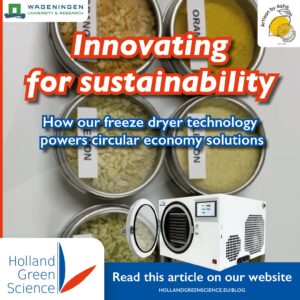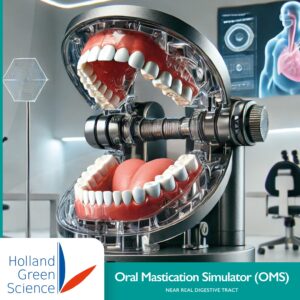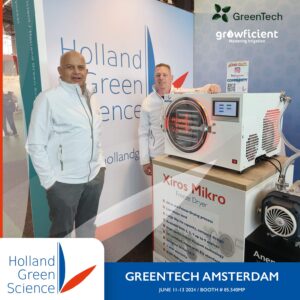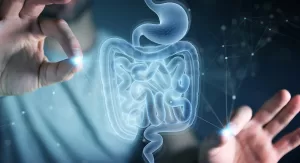
Revolutionary Insights from the NERDT System: Transforming gastric digestion Health Studies
At Holland Green Science, we are proud of the research that is being done with the NERDT™ (NEar Real Digestive Tract). And the articles that are being written are received very well. The NERDT is a state-of-the-art dynamic in vitro stomach-intestine system designed to simulate human and animal gastric digestion with unparalleled accuracy. This innovative tool is instrumental in advancing our understanding of gastric digestion by mimicking the biomechanics of the gastrointestinal tract, which strongly influences food disintegration and nutrient absorption.
Proven Effectiveness in Research
A recent study highlighted in a ScienceDirect article underscores the precision and utility of the NERDT™ digestive system in research of digestive process: “Overall, this study shows that the NERDT can be adequately controlled to achieve desired gastric digestion conditions, and appears to be a very useful tool to further improve the knowledge of the gastric digestion behaviour of complex foods such as milk.” This affirmation from the scientific community validates the NERDT™ as a critical instrument in digestive research, particularly in understanding the complexities of how foods are broken down in the gastrointestinal tract.
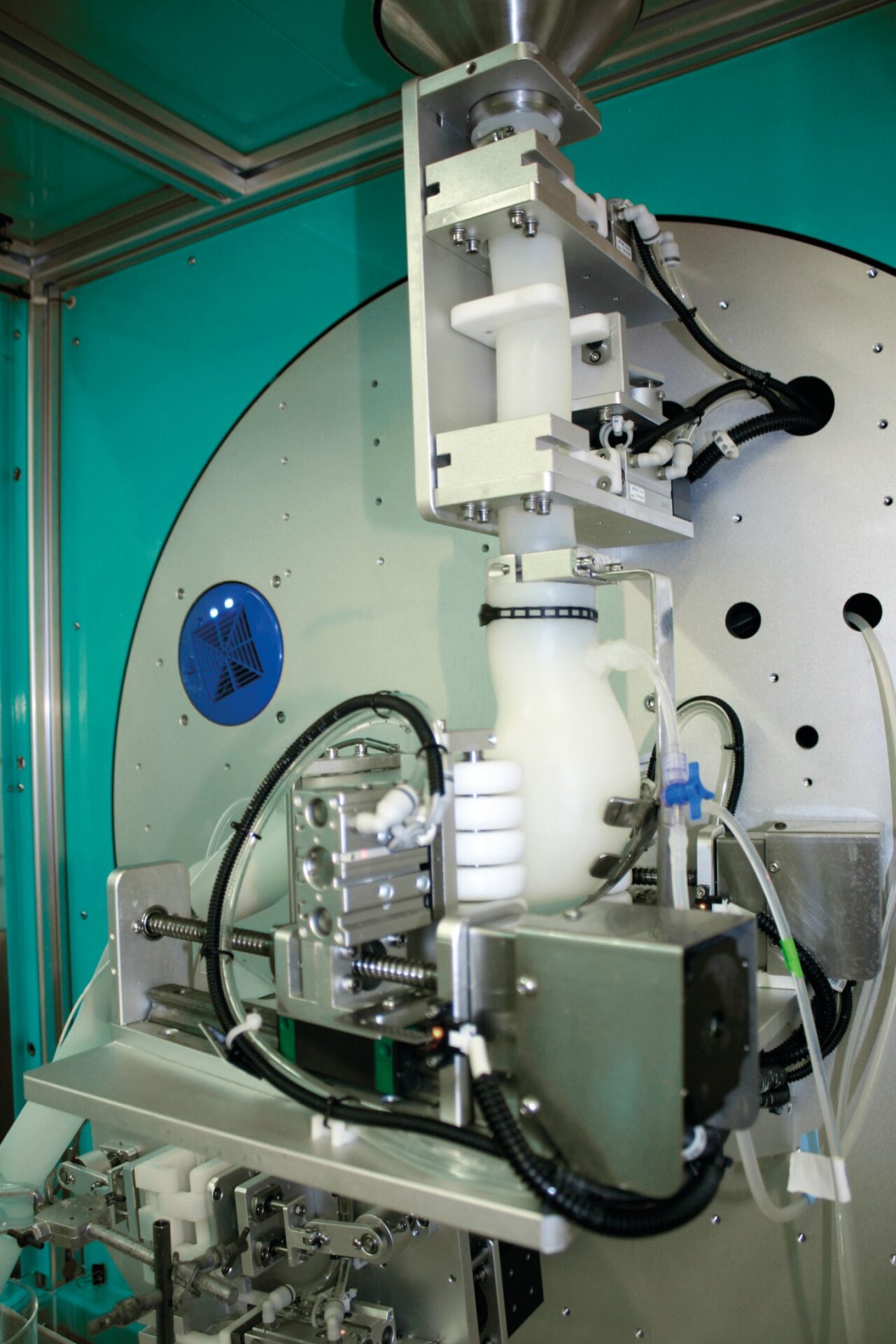
Unique Design and Functionality
NERDT™ stands out due to its unique construction and functionality. The digestive system includes a silicone model of the Oesophagus, stomach, and intestines, complete with all internal natural structures, crafted to closely replicate the actual digestive tracts of humans and animals. This includes:
-
Electromechanical Driving Rig: Mimics the peristalsis and its peristaltic movements of the lower esophageal sphincter.
-
Digestive Emptying Method: Enables partial stomach / gastric emptying through rotation, imitating natural processes. And even control of the duodenum.
-
Temperature-Controlled Cabinet: Maintains optimal conditions for digestive processes.
-
Built-in LCD Touchscreen Panel: Allows for real-time adjustments and monitoring of digestive conditions.
Adding digestive juices is built into the machine, from amino acids to enzymes. And can be alert to mimic the specific research subjects’ pancreatic juice composition such as with patients with diseases like diabetes. Control of pH by administering an acid or neutral liquid like Sodium chloride solution.
The journey of food: From Oesophagus to Small Intestine in the NERDT
Step 1: The Oesophagus
The journey of the food you eat and drink begins in the oesophagus, a long tube that connects the mouth to the stomach. Once swallowed, the oesophagus takes over by using peristaltic movements—a series of wave-like muscle contractions that push the food downward. The NERDT™ system is made out of hollow organs that replicate this process with an electromechanical driving rig that simulates the natural movements, effectively moving the food through the model oesophagus.
Step 2: The Stomach
Upon reaching the stomach, food particles are mixed and broken down by stomach acids and digestive enzymes. This is also known as the gastric phase. The stomach is not just a storage tank but also an active digestive chamber where food is prepared for further breakdown. In the NERDT™, the silicone model of the stomach represents this phase, complete with internal structures that mimic those of a real stomach. The NERDT™ stomach is manipulated by rollers that perfectly mimic stomach contraction it can then also be rotated to simulate the gastric emptying of stomach contents, just like in a natural situation would occur.
Step 3: The Pyloric Sphincter
After the stomach, food must pass through the pyloric sphincter, the gatekeeper between the stomach and the small intestine. This valve regulates the passage of food and prevents backflow into the stomach. In the NERDT™, a precisely controllable mechanical construction ensures that this transition is realistically replicated, controlling the timing and speed of stomach emptying.
Step 4: The Small Intestine
In the small intestine, the actual absorption of nutrients takes place. The food first enters the duodenum, where it is further mixed with bile from the gallbladder and pancreatic juices from the pancreas. This is where most of the chemical breakdown of food occurs. The NERDT™ simulates this part with a detailed model of the small intestine, where peristalsis continues and temperature and chemical conditions can be continuously adjusted. The food is then ready to go to the large intestine or colon for further digestion.
Each of these steps in the journey of food is essential for effective digestion and good health. The NERDT™, with its ability to faithfully simulate these processes, offers scientists and medical professionals a powerful tool for further investigating and understanding digestive behaviour, thereby reducing the need for animal testing and enhancing our knowledge of digestive processes.
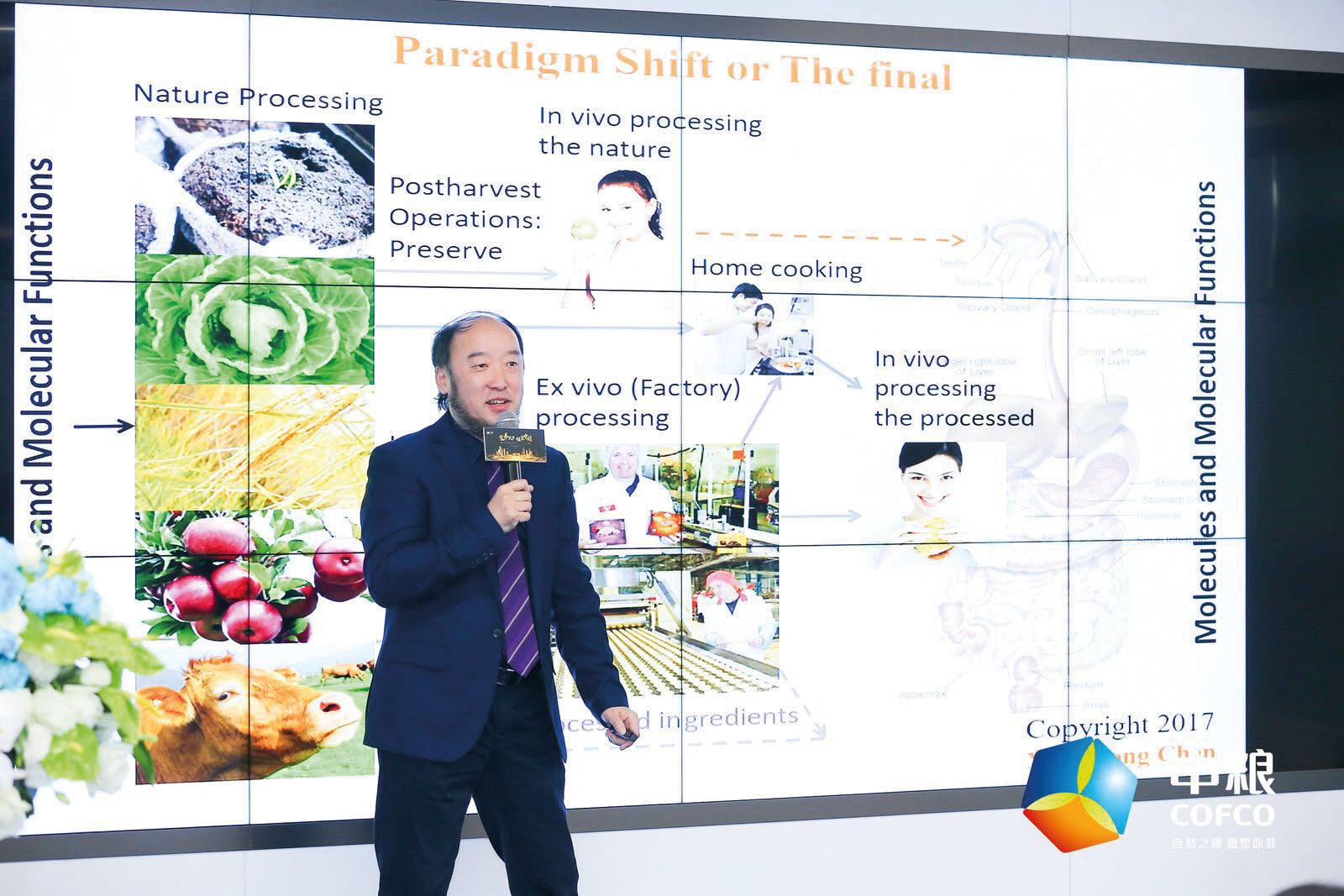
Reduction of Animal Testing
One significant benefit of the NERDT™ system is its role in reducing the necessity for extensive animal testing. By replicating the digestive process accurately, the NERDT™ allows for intensive research and experimentation without the ethical concerns associated with animal models.
Replicating ‘the real thing’ endlessly;
In the realm of scientific research, particularly within digestive health studies, the necessity for precise, repeatable conditions cannot be overstated. The NERDT (NEar Real Digestive Tract) system stands out as a revolutionary tool in this regard, offering researchers unparalleled control and consistency across experiments.
Controlled Conditions for Consistent Results
The true power of the NERDT lies in its ability to maintain controlled conditions for testing, time and again. This precision allows for the creation of a standard benchmark in digestive research. By ensuring that each experiment can be replicated exactly, the NERDT generates unique and valuable data that is both reliable and scientifically significant. This repeatability is crucial for validating hypotheses and strengthening the findings of digestive health studies.
Flexibility to Adjust and Innovate
Beyond its capability for standardization, the NERDT excels in its adaptability during ongoing research. Researchers can make incremental adjustments to various parameters such as the movement of different parts of the digestive model or the secretion of various digestive juices throughout the entire digestion process. This feature enables scientists to observe the direct effects of specific variables on digestion, offering insights that were previously unattainable, especially without the use of human subjects.
Ethical Advantages in Digestive Research
Furthermore, the NERDT system addresses a critical ethical component in digestive research. For many studies, particularly those involving potentially harmful substances, using human participants is not an option. The NERDT eliminates the need for human subjects by simulating their digestive processes accurately, thereby not only safeguarding human health but also opening the door to experiments that were previously deemed too risky or unethical.
NERDT™ Models
We offer three models of the NERDT™ system, each tailored to specific research needs with its individual digestive system:
NERDT™ Human Adult:
-
Mimics an adult human digestive system, using a 3D-printed silicone stomach modeled from an actual human organ. This results in an internal structure that is the same as that of an actual stomach.
NERDT™ Human Infant:
-
Designed to replicate an infant’s digestive system, it features a unique ability to tilt the system horizontally to a 90-degree angle, mimicking the natural position of an infant during sleep or rest. Common after feeding the infant.
NERDT™ Animal Rat:
-
Emulates the rat digestive system, facilitating extensive research without the use of live animals, just like the other models, using advanced 3D silicone printing techniques for their organs.
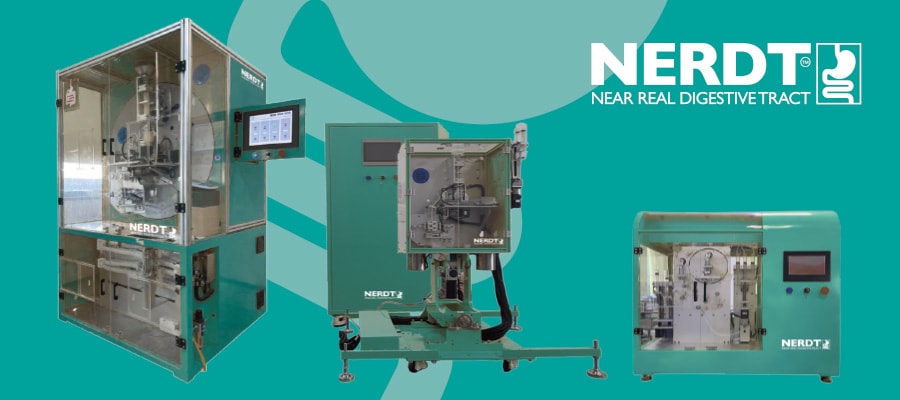
Implications Across Industries
The applications of the NERDT™ system are vast across the food science, nutrition, and pharmaceutical industries. It allows for the precise study of how different substances are broken down and absorbed in the digestive system, leading to better food products, more effective nutritional plans, and improved drug delivery systems.
Our Commitment to Innovation
At Holland Green Science, we are dedicated to pushing the boundaries of research and innovation. The NERDT™ Digestive system is a prime example of our commitment to providing tools that not only enhance scientific understanding but also promote ethical research practices.
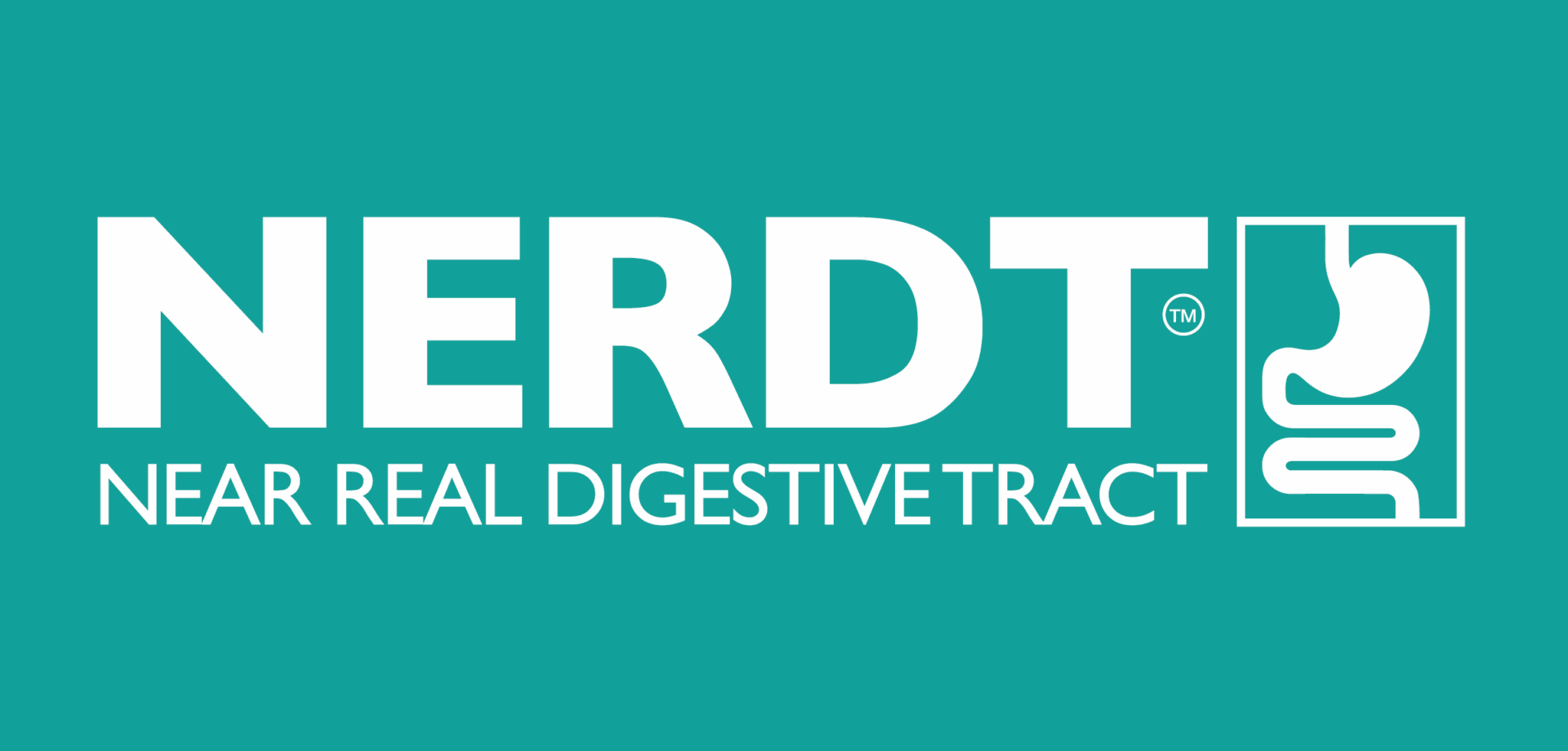
Stay Engaged
For more detailed insights into the NERDT™ system and its revolutionary impact, we invite you to read the full article here @ Elzevier/ScienceDirect. Follow our blog and subscribe to our newsletter for the latest updates and breakthroughs in green science technologies.

